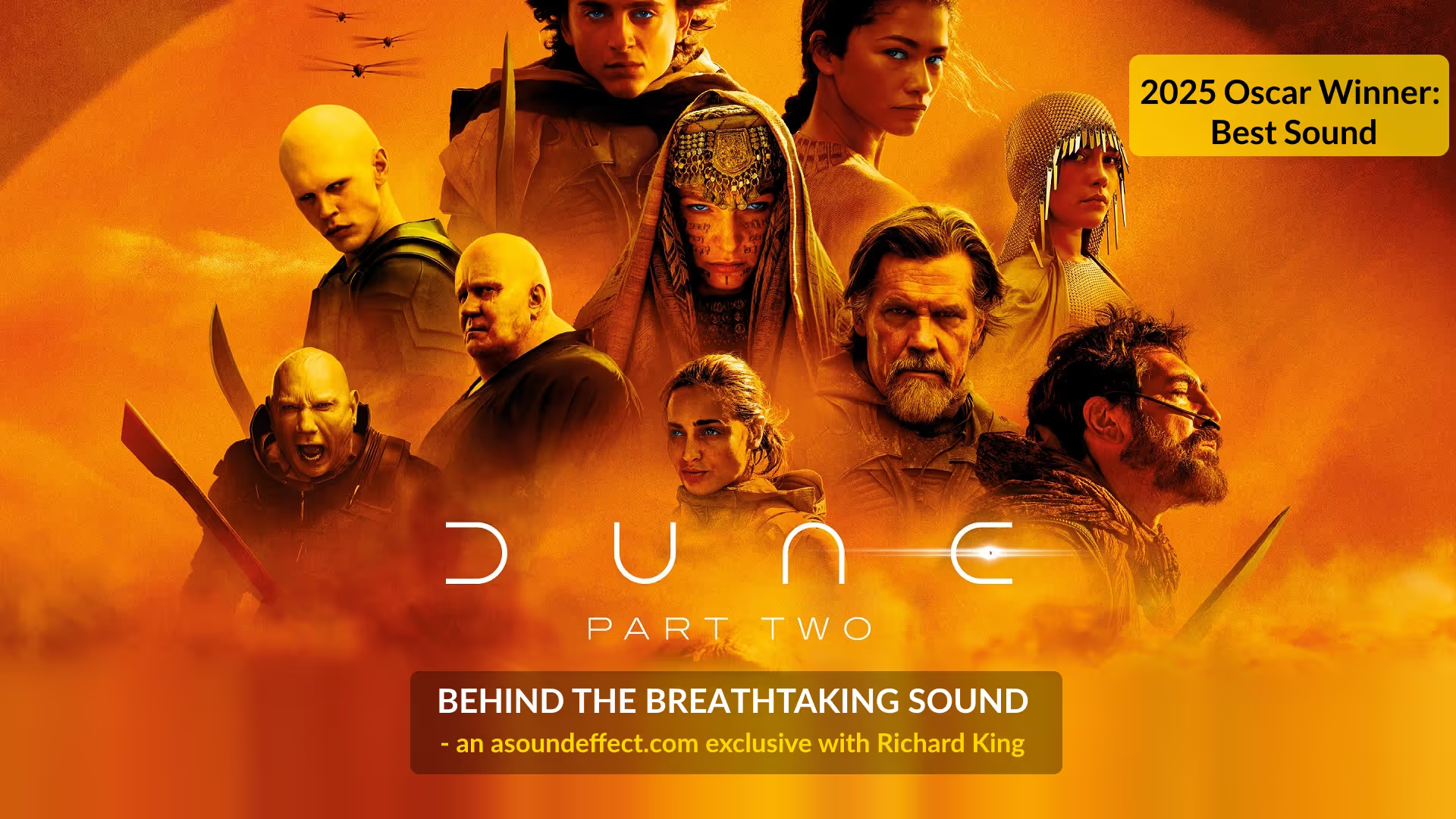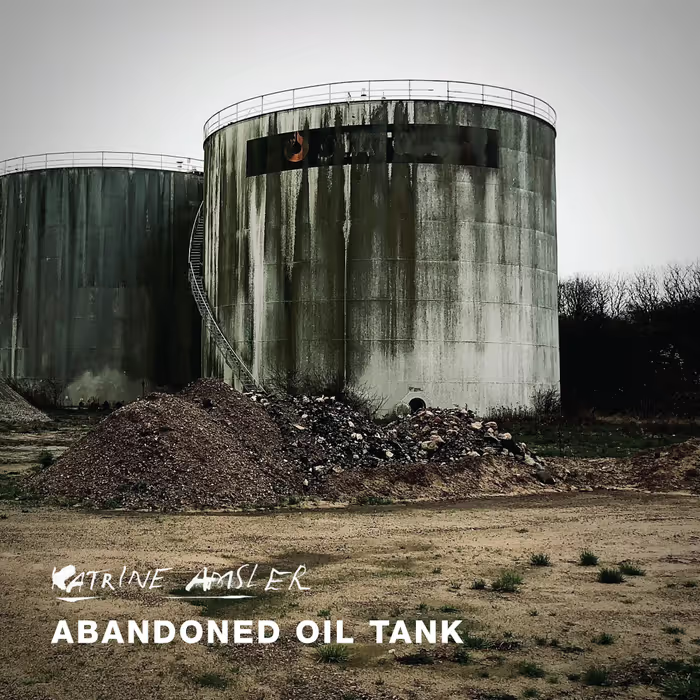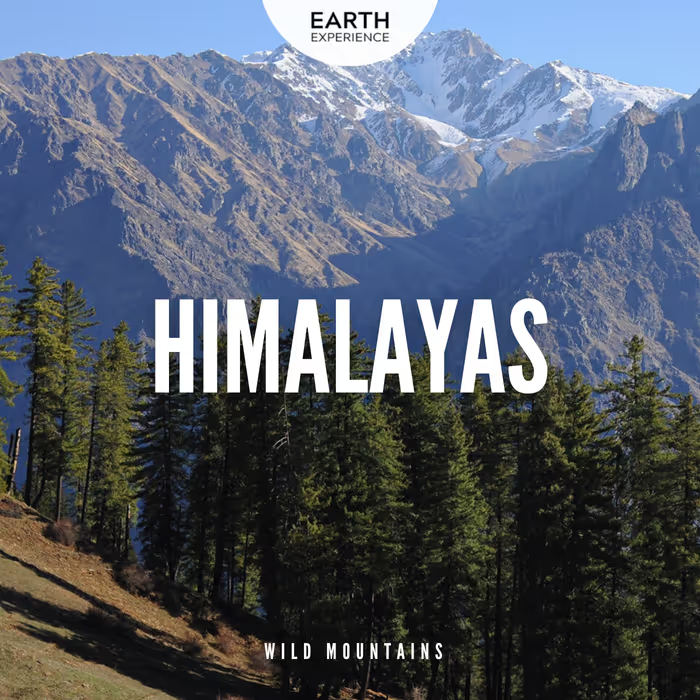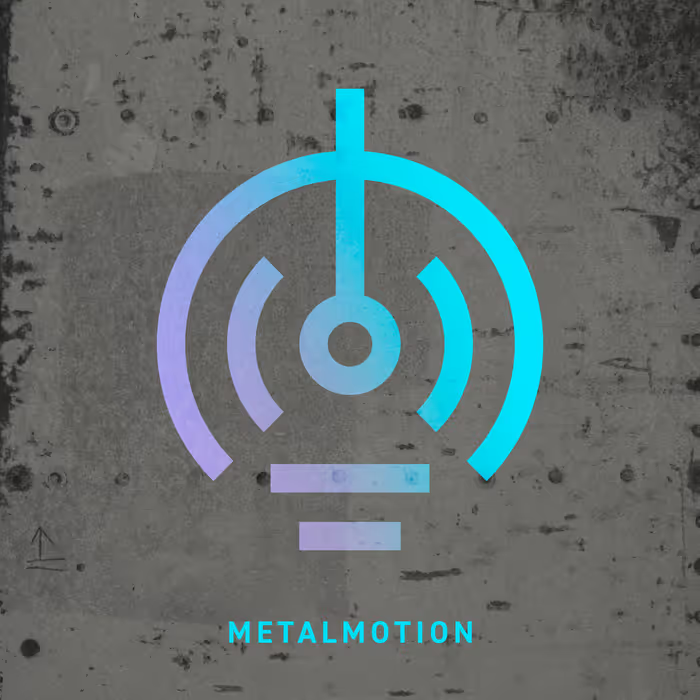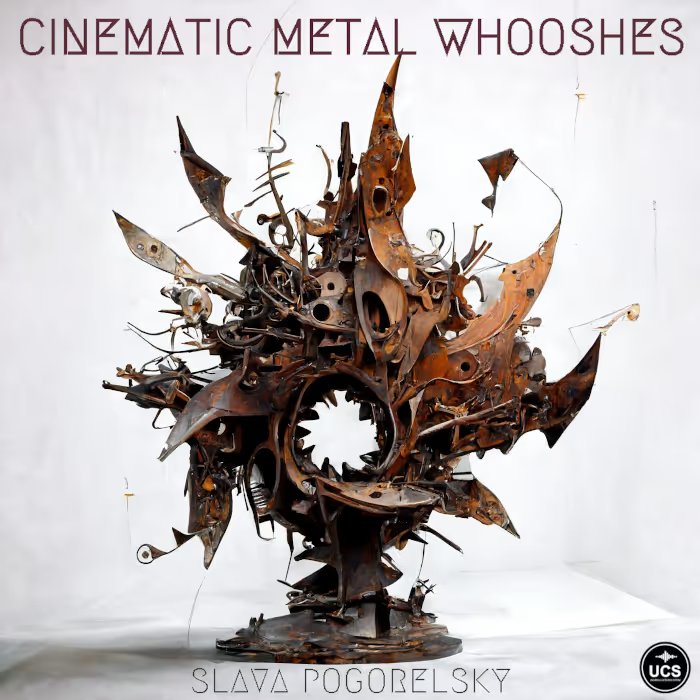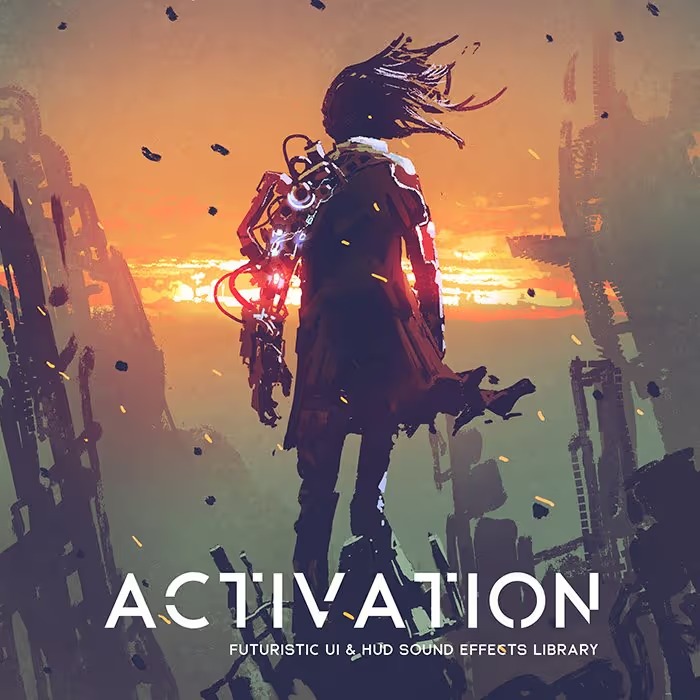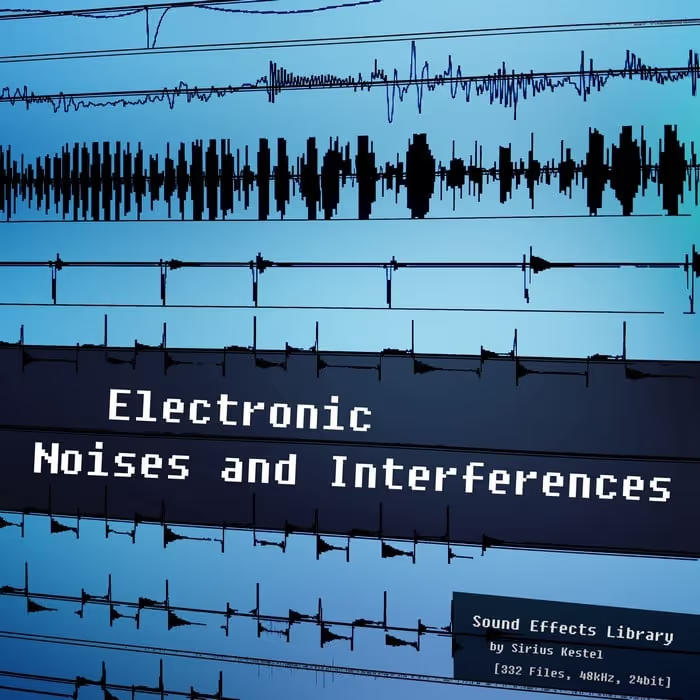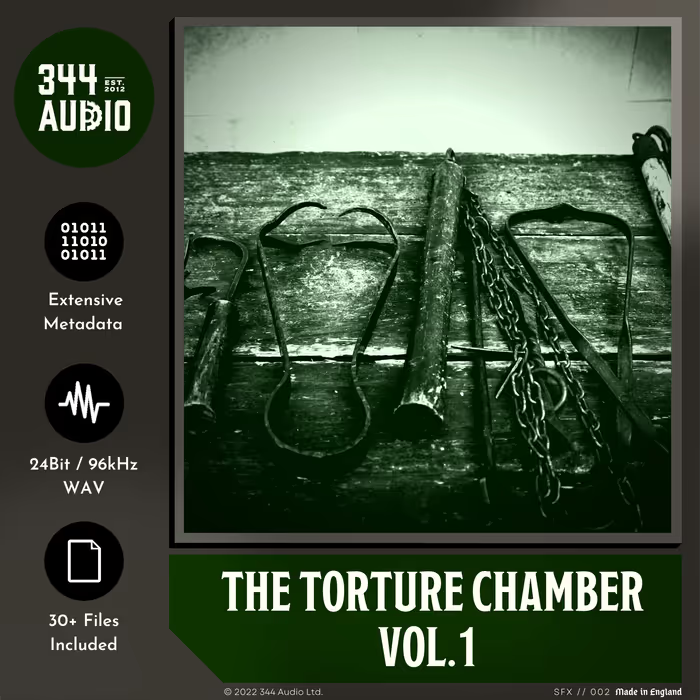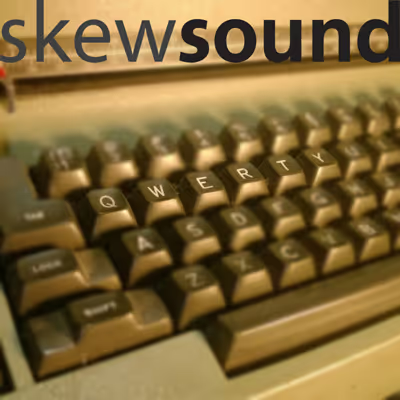Here, Supervising Sound Editor/Sound Designer Richard King at Warner Bros. Post Production Creative Services in Burbank discusses how the sound team created a realistic feel for the sci-fi film by capturing tons of sand recordings (in the field and on the foley stage), recording massive loop group sessions for the Harkonnen crowds in the arena scene, and focusing on the movement sounds for the sandworms instead of vocalizations. King talks about working with his long-time collaborators, re-recording mixers Ron Bartlett and Doug Hemphill, working with director Villeneuve for the first time, and much more!
And, as an added bonus, we've also included interviews with Hans Zimmer and Denis Villeneuve on the sound of the film. Get the full story on the mesmerizing sound of Dune Part Two below:
Director Denis Villeneuve’s Dune: Part Two is now in theaters and the sound does not disappoint. From thrilling sandworm rides to peaceful sandwalks through the desert of Arrakis, the sound is a mesmerizing journey that’s heart pounding at times and heady in others.
Oscar and MPSE Award-winning supervising sound editor/sound designer Richard King at Warner Bros. Post Production Creative Services in Burbank talks about his journey of editing the sound on Dune: Part Two, collaborating with a team of recordists and editors, some working halfway around the globe in New Zealand, to get the sound of this epic film into shape for the dub stage with just two and a half months to do it in.
King talks about how they captured tons of field recordings of sand and wind to lend a realistic feeling to the deserts on Arrakis, how they created the sound for the sandworms, and his sonic inspiration for Paul’s white-knuckled sandworm ride. He also talks about recording massive loop group sessions (with punk rockers!) for the Harkonnen arena scene, adding grit to the scenes, preparing the effects tracks for the dub stage, and much, much more!
Dune: Part Two | Official Trailer 3
Hi, Richard! Thanks for having this chat. I am so thrilled to be talking about the sound editing on Dune: Part Two…
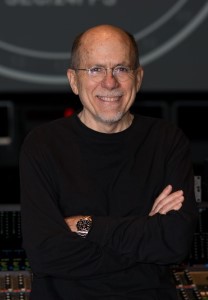
Richard King (RK): I’m really pleased to talk to you about this movie, Jennifer. I love this film, and loved working on it. And I think you’re one of the best at this sort of thing there is.
So it’s a pleasure to get to talk to you about it.
Thanks, Richard! I’m so happy to be here to talk with you about it. So I had a chance to talk with the re-recording mixers Ron Bartlett and Doug Hemphill, and they had so many great things to say about the sound editorial side…
RK: I’ve known both of them for about 40 years, unbelievably.
Ron, I think, cut foley for me on my first show that I’ve supervised and Doug mixed effects on the second show that I supervised. So we all started out roughly at the same time. There’s a real deep friendship there and a deep understanding of each other and a very similar aesthetic regarding sound.
So it was a blast working with those guys.
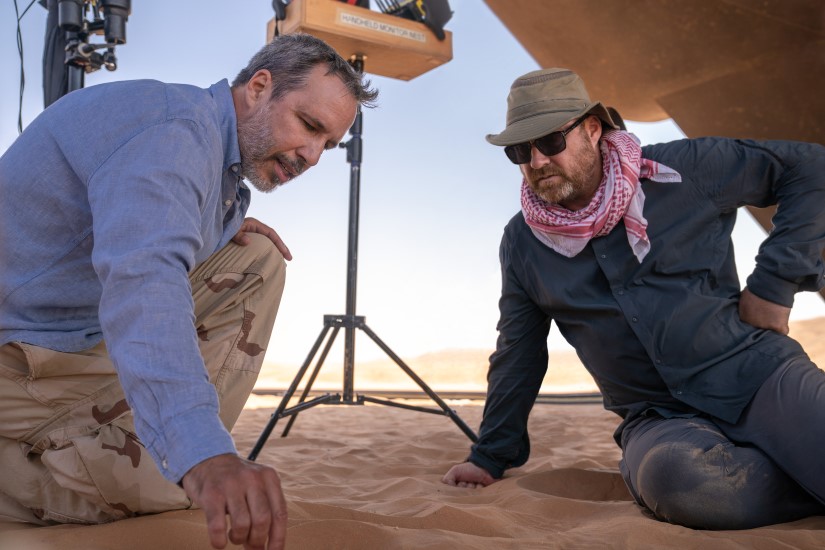
And what about working with Denis? Have you ever worked with him before? How did you get started on Dune: Part Two and when did he bring you on board?
RK: No, I had not met Denis before but I have been an admirer of his films for a long time.
I was brought on fairly late in the process. I’ve literally had about 2 ½ months before we started mixing to prepare the show. So Denis and I had a spotting session with Joe Walker, the picture editor, and we went through the film. I got his take on the overall vibe of the show and what he was imagining the world of Dune to be like.
I’ve literally had about 2 ½ months before we started mixing to prepare the show.
One of the words that he used a number of times was “documentary.” He wanted the film to really feel like you were hearing what was recorded on the day they shot the scene – very real, very tactile, very recognizably real. In that way, I think the audience is better able to immerse themselves in the world. They’re not holding it at arms lengths. Like in Star Wars movies, everything’s quite exaggerated and there’s a certain aesthetic that they adhere to that keeps you at arm’s length a little bit. It’s clearly a fable being told to you from a long time ago, far away.
He wanted the film to really feel like you were hearing what was recorded on the day they shot the scene…
Denis wanted Dune to be a place that felt as if you could imagine yourself being there. Denis had a lot of specific thoughts yet he also was very open to new ideas to expand the sonic world of Dune. And we had lots of opportunities to do that in Dune: Part Two, as there are more action scenes, there are more big set pieces, and there’s more big, cool machinery and seismic weather events that happen. So we had a great time and it was a wild ride.
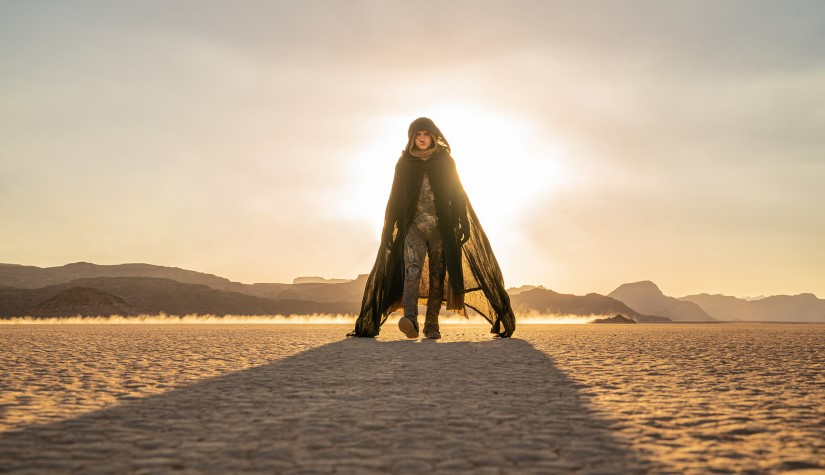
Let’s talk about some of the field recordings that were done for the film. Ron and Doug had mentioned some interesting sand recordings that you and Charlie Campagna captured – these cool sand footsteps for when the characters are sliding down the dunes. Doug described it as “a low, undulating sound of the sand shifting deep underneath them.” Can you talk about that and the other field recording trips you did for the film?
RK: Yes, there’s a sound that we refer to as a “sand groan.” It’s a very long sound, like if you slide a large plate of sand down the face of a dune then the compression creates a very low-end sound that radiates down from the sand to the sub layer of harder sand or rock underneath and then bounces back. It’s a very low, almost sub-harmonic frequency groaning sound. It’s very interesting, very organic sounding.
Eric Potter and Charlie Campagna spent a couple of weeks out in the desert on three different recording expeditions…
Also, when you walk down the face of a dune, you get these little ping-type-sounds on every step caused by the same phenomenon. Eric Potter, actually, and Charlie Campagna spent a couple of weeks out in the desert on three different recording expeditions to Death Valley, to Kelso Dunes, and a couple of other places in the desert to get those sorts of sounds, as well as walking in sand, and the sound of the Fremen who bury themselves in sand (they use a little snorkel to breathe through and then burst out of the sand to attack).
How Hans Zimmer Created the Score for ‘Dune: Part Two’
We did everything that we could possibly do or imagine that we would need involving sand with different kinds of sand, and different textures of sand.
We did everything that we could possibly do or imagine that we would need involving sand with different kinds of sand, and different textures of sand. We’re on Arrakis for almost the entire film in Dune: Part Two and in different parts of the planet, so we needed different qualities of sand with different textures because it clearly looks different in different locations on Arrakis. So, there was a lot of field recording.
There was a lot of field recording to get the sounds of machinery that we would then pitch and manipulate and use for things like the harvesters and sweeteners for the ornithopters and other mechanical stuff. We did a lot of recording and a lot of R&D to see what sorts of sounds would be appropriate, and to have that kind of gritty feeling that we wanted.
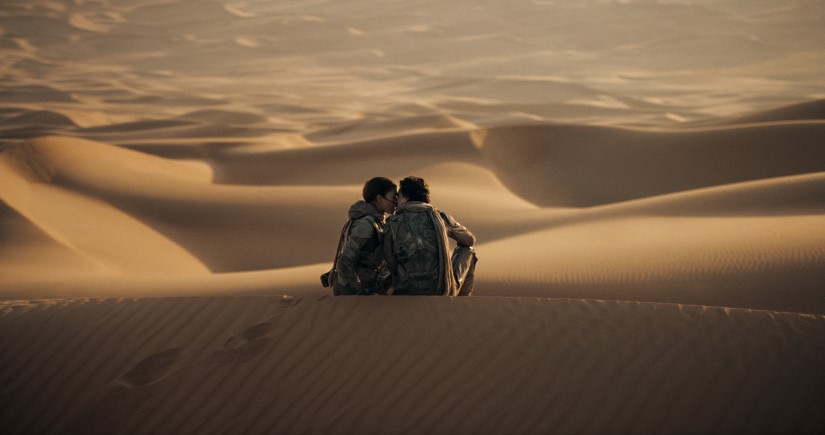
Yeah, it definitely had a gritty feeling. The desert and the sand sounds were amazing. There’s a scene in which Paul is sent out into the desert to survive on his own. There’s this nice, quiet moment where you hear these winds singing over the sand and all the little sand particles. You can almost feel like you’re sitting there getting gritty…
RK: We sent George Vlad (the recordist behind the Mindful Audio sound effects libraries) out to the Sahara Desert to record wind and he recorded a beautiful collection of winds, from absolutely dead calm to gale force or to sandstorm force. Those were really beautifully recorded and really helpful.
Desert recording sessions with George Vlad
We sent George Vlad out to the Sahara Desert to record wind…
A lot of field recording was done at night. Charlie and Eric had to record at night because, first of all, the heat. We were working in summer and it’s very hot. Also, there are flies. They were able to work all night in much more moderate, comfortable conditions and work by the light of either the full moon or work lights.
Hear the interview with Richard King here:
Sand was a big deal and I imagined in designing the equipment that, at least on Arrakis, all the equipment has sand in it; it’s lived a hard life. Some of the Harkonnen equipment we designed to be very high-tech yet still relatable as recognizable big machinery but the equipment on Arrakis has been through the mill, so it all has a little flavor of rust, of sand in the gears, just to add that level of believability.

When you were laying out the tracks for the re-recording mixers, did you have an actual grit layer that they could play with in the mix when they wanted to hear a little more of that?
RK: The tracks were put together and designed a little more concisely than that. I was able to pre-dub the effects myself. For one thing, I wanted Denis to be able to hear what we were doing in context and fully-realized, just to get his feedback and also to make the mix much more efficient.
…I wanted Denis to be able to hear what we were doing in context…and also to make the mix much more efficient.
I feel like if we go into the mix really prepared and with a specific idea – without fifty wind tracks but four or five that are really good and that all work and that work together – then we have a starting point that I feel works and we can expand from there. It was edited and designed and premixed by me pretty concisely and then it was only made better and better with the input of, and the mixing chops of Doug and Ron.
And did foley help contribute to that gritty feeling?
RK: Yes, Dan O’Connell and John Cucci at One Step Up did the foley and they brought in truckloads of different kinds of sand, different qualities, different grits. So the footsteps and the sand movement and the sand sounds in general are a combination of foley that Dan and John did, and the sand recordings that Eric and Charlie did.
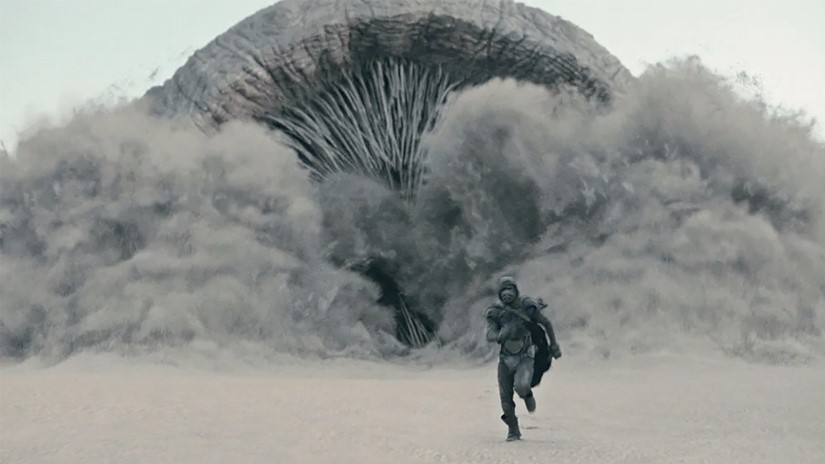
So staying on the subject of sand, but getting more epic in scale, can you talk about what went into the sound of the sandworms?
RK: That went through an evolution. I thought it would be more interesting to not play the vocalizations of the worms, since the go-to, obvious choice when a big creature opens his maw is to hear some vocalization.
We did a lot of work with large objects moving through sand, overstand, and under sand.
But since they’re the only large creature in this entire environment, they would really have no evolutionary reason to roar, to threaten something else. They have no threat; they have no natural enemies except each other. So, it’d be a lot more interesting to convey their scale another way. These things are kilometers long; they’re thousands of tons of meat that just fly through the desert, like a freight train. I thought it’d be a lot more interesting to play their interaction with the environment, and thereby accentuate their mass and their scale and their sheer power that way.
We did a lot of work with large objects moving through sand, overstand, and under sand. We buried microphones in the sand and dragged large objects over them. We recorded a lot of grit that way and we were then able to pitch and manipulate and make it feel more massive.
‘Dune: Part Two’ Director Denis Villeneuve Breaks Down the Worm-riding Scene (with shoutouts to the sound team!)
Particularly for Paul’s worm ride, the wind was a big, critical factor that I think makes it feel really threatening and scary.
Particularly for Paul’s worm ride, the wind was a big, critical factor that I think makes it feel really threatening and scary. I wanted it to feel almost like a storm at sea, like he’s barely hanging on for dear life and being whipped by wind and waves of sand. It was almost like a scene out of Master and Commander, or almost like he was surfing on this huge thing, trying to gain control of it while it’s trying to buck him off. It’s twisting so that he gets closer and closer to the ground and might get crushed underneath it. The scene just had to have this feeling of terrifying chaos, like anything could happen. It’s not safe; it’s not predictable. You don’t know that he’s going to master this thing.
Only when he begins to master it do you get the feeling that he’s now getting control of it. Doug did a very cool, dramatic frequency shift out of the sound effects into a much more subdued sound effects field into the heroic music as Paul stands up and finally has control.
You really do feel the danger of Paul riding this huge sandworm. I thought you did a really good job of conveying that he’s in mortal danger here…
RK: Yeah, and the images they captured of that were so convincing and real. It did not feel like anything that was shot on a soundstage. It really rang true. It felt real. It’s almost like this worm is so big, so vast, and has so much mass that it creates its own gravity around it.
I thought the putting together of it – the shooting, and Joe’s cutting of it – was just masterful. So we had a lot to live up to sonically, to match that feeling.
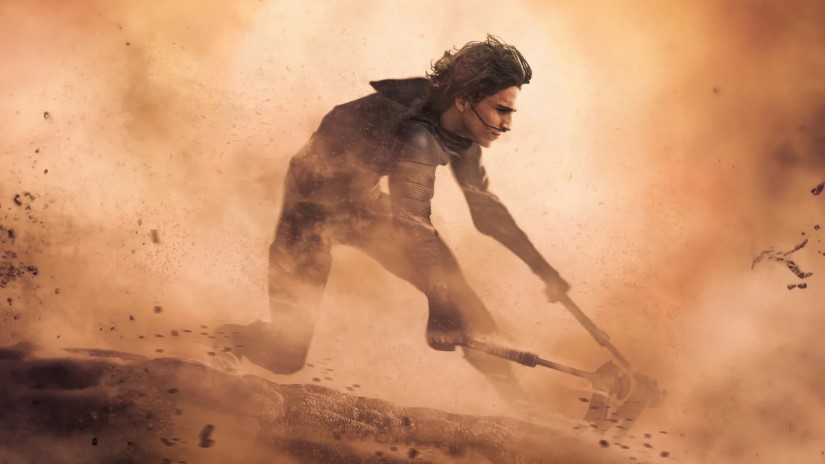
But also a lot to work with! The visuals gave you a lot to work with the waves of sand that come over him. There’s just a lot of opportunity for sound here…
RK: A brief side story: it kept reminding me of Master and Commander. Peter Weir gave Doug and I a very good lesson on that. We mixed this storm scene where the ships rounded Cape Horn, and one ship is chasing the other through a gale. We had created all the tracks and did predubs but we hadn’t mixed all the predubs together in a cohesive mix. We wanted to play for Peter what we had: the elements, the water, the wind, the sails flapping, the ship creaking, and the voices. We just wanted to show him the tableau that we had without having tweaked it yet. We played it for him and it was a mess. It was chaos. It was too loud and too quiet in places. It was all over the place. And he said, “I love it. Now take another day or so and do whatever tweaks you want to do. I’ll come back and listen to it again.”
The lesson he taught us was that you can overwork something and you can suck all the life out of it that way…
And so Doug and I got every wave just the right level, got every splintering of the masts just right, and got all voices audible. We played for Peter the following day and he was let down. He said, “I think it was better before.”
The lesson he taught us was that you can overwork something and you can suck all the life out of it that way, especially in a moment like that, which needs to feel terrifying and chaotic and you really don’t know what’s going to happen in the next moment.
“Worm Ride” for me was very much like that. And I thought of Peter’s lesson a lot in working on that scene.
Yeah, that’s a really good lesson. It’s almost like depth-of-field for sound. If all the sounds are the same level, if everything’s in focus, then it feels flat. You almost need that messiness of sound levels to add a feeling of depth, and also to make it feel more real, more realistic…
RK: Yeah, and the occasional sound that’s just crazy too loud and just unexpected. You want the audience to really not know what’s going to happen in the next second and just feel on the edge of their seat. And so it was really fun to try to achieve that.
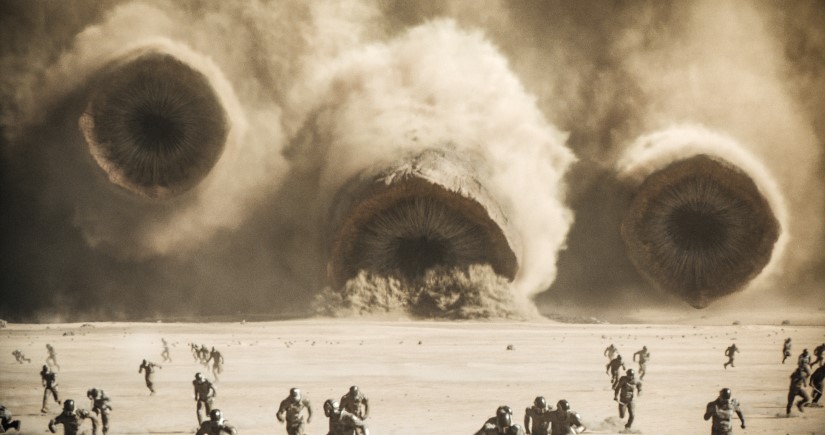
So there are a bunch of different sandworms in Dune: Part Two. They ride a fleet of them to the south of Arrakis, and during the big end-battle, there are three worms, I think, that they use for the attack. So did you have a slightly different palette of sounds for those moments when we have more than one worm? Does Sandworm Jim sound a bit different than Sandworm Timmy?
RK: They’re all roughly the same size. Really, the sound differences were more dictated by what they were doing than by their individual personalities, so to speak.
…the sound differences were more dictated by what they were doing than by their individual personalities, so to speak.
We use one sound from Dune (2021) a couple of times in the film, which was a “clonk, clonk, clonk” sound that it makes. It’s a kind of mysterious, cool sound that isn’t appropriate in a battle scene, or in a scene where it’s being overtly threatening. But it’s really effective as a kind of a mysterious sound. So we use it a little bit just before the giant worm appears out of the mist towards the end of the film. And we use it when they summon the worm to eat the dead Harkonnens that they’ve killed.
Otherwise, the sounds of the worms were, like I said, the sounds of this thousand tons of meat interacting with an environment of sand and moving really fast and with great agility. They can leap out of the sand; they can go underneath the sand.
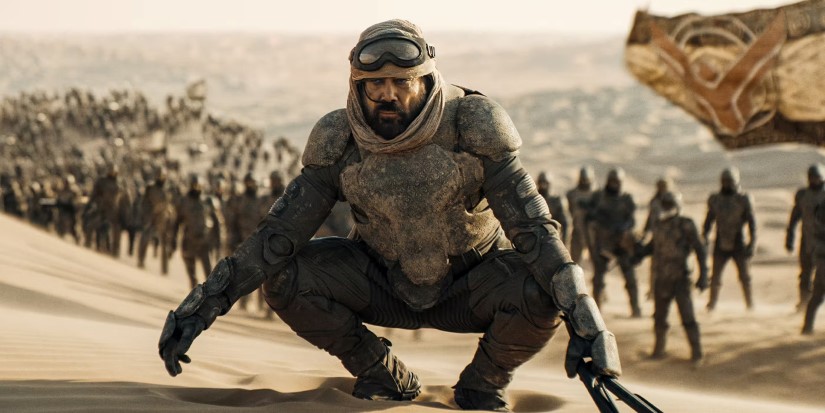
The sand is like water. I thought that was a great comparison…
RK: Yeah, and Denis used that analogy often in describing what the background should be like, that it is a lot like the ocean or a lot like a snow-covered landscape that’s very quiet and muffled. The desert of Arrakis is a place of many different and widely varied moods and intensities and can go from quiet, peaceful, mysterious to raging sandstorm crazy that (as they say in the film) can rip the finish off of steel.
…we made some birds and mysterious animals and insect sounds that seemed to fit the mood of Arrakis…
So it’s an interesting environment to find backgrounds for and the winds that George Vlad recorded in Africa were a real boon. We also created some bird sounds and animal sounds. Denis didn’t want to use any terrestrial sounds of animals, of course, so we made some birds and mysterious animals and insect sounds that seemed to fit the mood of Arrakis, that could be heard at night. Denis’s idea was that the little critters come out at night, but during the day, they’re asleep underneath the sand or in a cave or whatever. But at night, they all creep out and make themselves known.
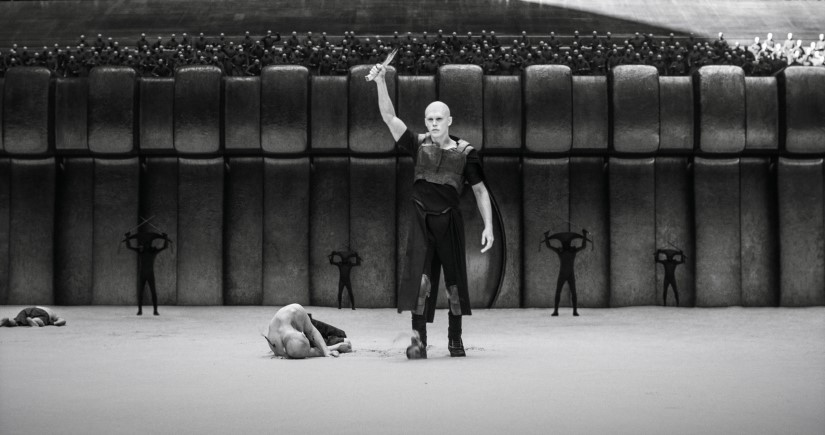
You mentioned working with George Vlad. You also got to work with Martin Kwok and Dave Whitehead in New Zealand. They created the entire Fremen language, and they did the arena scene with all those big crowds. Can you talk about that? Were you involved with that in any way, or was that something that they had done before you came onto the film?
RK: No, they did it. It was being done concurrently. And they did an enormous amount of work with that, and also with the Harkonnen voices. Many loop group sessions were done, which we got just in the nick of time before the actor strike happened. We did loop group sessions here in LA and also a whole bunch of them in New Zealand.
Martin did a group recording with a bunch of punk rockers in New Zealand, who were very uninhibited in their vocal expressions…
Martin was the lead on that and Dave did a lot of processing work and multiplication work, taking smaller crowds and making them sound huge. David Bach here in LA also did a lot of work with that. He was helping to make the smaller groups that Martin had recorded in New Zealand into huge, arena-sized groups.
Martin did a group recording with a bunch of punk rockers in New Zealand, who were very uninhibited in their vocal expressions and could just let their freak flag fly. That stuff was great for the Harkonnens who were basically just a race of crazed lunatics. When they get excited in the arena, it would have been like Roman gladiatorial combat but probably times a thousand.
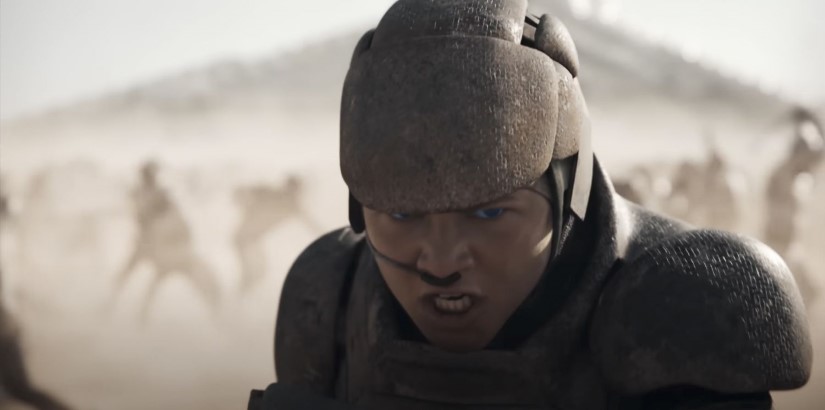
There was definitely a sense of bloodlust.
What was the most challenging scene for sound? What were some of your challenges and what went into it?
RK: It was all challenging. It was challenging for the amount of time that we had to do it in. There was a lot of working from the gut, which I think is not a bad thing. It worked out well, but there was a lot of working from the gut because we were on such a short schedule. There were so many complicated scenes, none that we really struggled with to the end. It felt like it fell into place and it was a lot of hard work and a lot of revisiting the same scenes and thinking, “Oh, we can do this better. We can add some things here. There’s too much sound here. We need to remove some of the stuff and make it clearer.”
The attack on the Harkonnen harvester towards the beginning of the film was a big set piece that I worked on for a long time.
Any of the big set pieces went through a lot of iterations. The attack on the Harkonnen harvester towards the beginning of the film was a big set piece that I worked on for a long time. I cut a lot of that with the help of my team.
The Worm Ride was complicated, but it was fun. It was just fun to do. All those scenes are fun to do because the canvas is so big, so vast, and it’s fun to make sounds for things like that. The goal is to really feel the power and the massiveness and the scale. I love doing stuff like that.
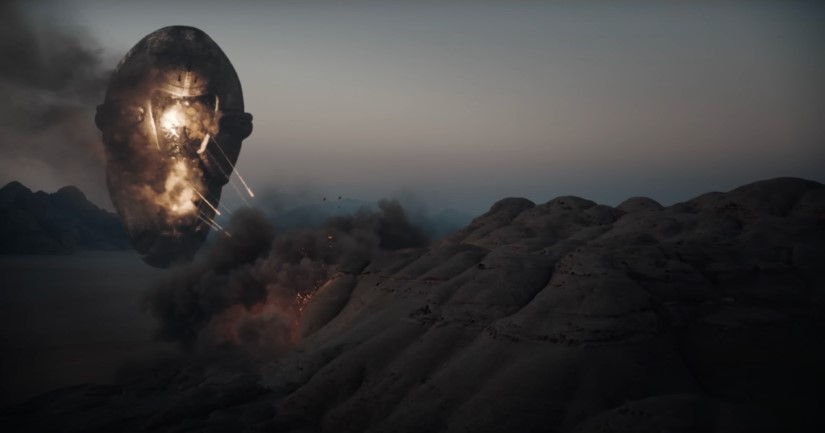
What about your favorite single sound? Was there a one-off sound for the film that was your favorite?
RK: The Harkonnens have these battlecruisers that are firing super rapid projectiles. It’s a great sound that Lee Gilmore created. I love that sound and I love that scene. It sounds fantastic.
…I just love and remember having such a great time working on the night scenes on Arrakis…
The whole show has moments in it throughout, but I just love and remember having such a great time working on the night scenes on Arrakis, like when Paul’s learning how to sand walk with Chani. There are these lovely alien insects and occasional birds and one or two animals that may or may not be threatening. They’re a little scary, a little spooky. I really love that section when he’s learning to sand walk, and also when he hears Jamis, his spiritual mentor, talk to him.
It’s a beautiful film. I’m in awe of Denis. He has such a deep feeling for this material in this world. He gave us a lot of rope to try things and really expand upon the world. He was very open to anything that we wanted to try new or change, but he knew immediately if something he heard was right or not.
How Masterminds Hans Zimmer + Denis Villeneuve Created ‘Dune Part 2’
…he knows immediately if it’s going to work or not, if it’s the right sound or not, if it’s the right vibe or not.
Denis is a great leader in the sense that he gives you the freedom to feel like you’re really able to create and invent and contribute new material, but he knows immediately if it’s going to work or not, if it’s the right sound or not, if it’s the right vibe or not.
There were some things that he was pleased with from the first film, like the ornithopters, the thumpers, and the shield sounds. All of those we rebuilt. The ornithopters in Dune: Part Two were rebuilt from the components that were created for Dune, but we had full latitude to add or to modify or adapt or make them new, to make them feel fresh again. And they’re all doing different things. So it’s not as if we could just lift the sounds directly from Dune. But those are the specific things that we used elements of from Dune.
Yet, Denis was very open to any new ideas and it was a field day. Working on this movie for a sound person was a great joy and a great pleasure. You’re on this fully-realized world that Denis has visualized and created. I’m so thankful that he invited me along in that journey.
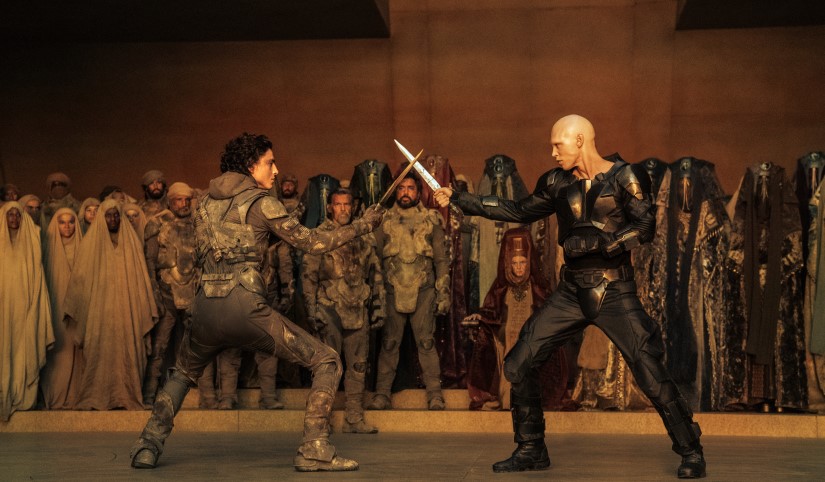
Now that this journey is over and the film is finished, what’s been your favorite part of the experience? What has stuck with you the most?
RK: The whole thing! Starting out wondering how in the hell we were going to do this in the time that we had, and was it even possible? I fed off that excitement, that adrenaline of having a tall mountain to climb.
I fed off that excitement, that adrenaline of having a tall mountain to climb.
I found the whole experience to be thrilling, frankly. The chance to work with Denis and to work with Joe Walker was a thrill. Denis is a masterful filmmaker and Joe is a great colleague to have in the trenches with you. He knows that world intimately too, and has very good sound sense.
The entire crew was just amazing. It was a blast to work with Doug and Ron, having known them for so long. It was like working with my two brothers.
You have accomplished so much in the 2 1/2 months that you had for sound editorial. It’s such an epic film and also a long film and your sound team did an amazing job of creating all of these sounds, and Ron and Doug did an incredible job of bringing it all together in the mix.
Richard, thank you so much for having this chat with me about Dune: Part Two. I really appreciate you sharing your time and your story with me!
RK: My pleasure, Jennifer.
A big thanks to Richard King for giving us a behind-the-scenes look at the sound of Dune: Part Two and to Jennifer Walden for the interview!

